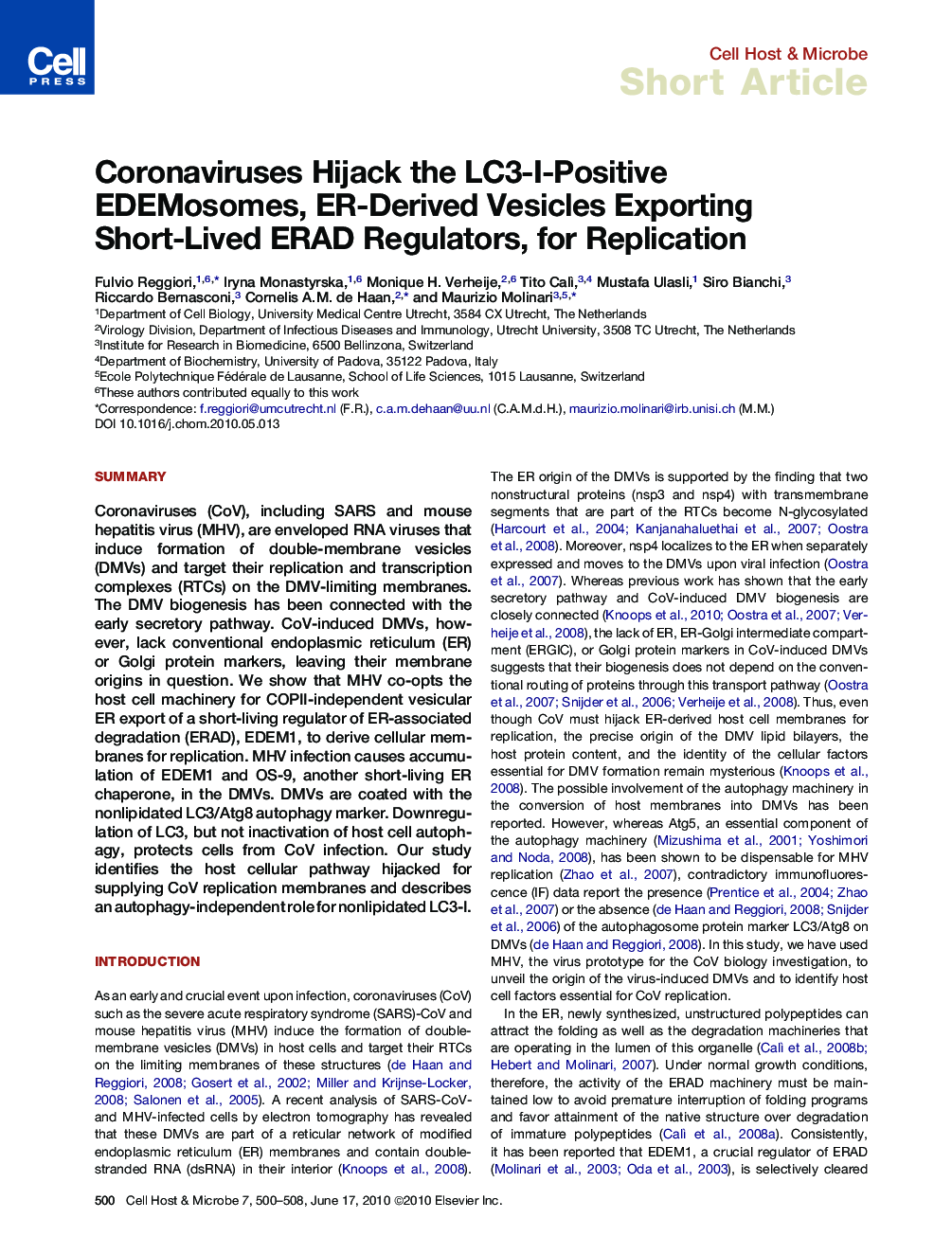| Article ID | Journal | Published Year | Pages | File Type |
|---|---|---|---|---|
| 4361406 | Cell Host & Microbe | 2010 | 9 Pages |
SummaryCoronaviruses (CoV), including SARS and mouse hepatitis virus (MHV), are enveloped RNA viruses that induce formation of double-membrane vesicles (DMVs) and target their replication and transcription complexes (RTCs) on the DMV-limiting membranes. The DMV biogenesis has been connected with the early secretory pathway. CoV-induced DMVs, however, lack conventional endoplasmic reticulum (ER) or Golgi protein markers, leaving their membrane origins in question. We show that MHV co-opts the host cell machinery for COPII-independent vesicular ER export of a short-living regulator of ER-associated degradation (ERAD), EDEM1, to derive cellular membranes for replication. MHV infection causes accumulation of EDEM1 and OS-9, another short-living ER chaperone, in the DMVs. DMVs are coated with the nonlipidated LC3/Atg8 autophagy marker. Downregulation of LC3, but not inactivation of host cell autophagy, protects cells from CoV infection. Our study identifies the host cellular pathway hijacked for supplying CoV replication membranes and describes an autophagy-independent role for nonlipidated LC3-I.
► Coronavirus replicative membrane vesicles (DMVs) are associated with LC3-1 ► LC3-I, but not an intact autophagy machinery, is essential for CoV replication ► CoV hijacks ER-derived vesicles exporting short-lived ERAD regulators to generate DMVs
